Note: This story was last updated at 12:37 p.m.
Planning for the new Manhattan Project National Historical Park has started, and federal officials this week toured Jackson Square, the former K-25 site, Oak Ridge National Laboratory, and the Y-12 National Security Complex.
Stops included the Alexander Inn, Chapel on the Hill, the former K-25 Building site, the Graphite Reactor at ORNL, and two buildings at Y-12: Building 9731, a pilot plant, and Building 9204-3, also known as Beta 3.
“Several of those sites are just amazing,” said Vic Knox, associate director of park planning, facilities, and lands for the National Park Service in Washington, D.C. “They seem like they are just the way they were in 1943. It seems like they take you back in time.”
Oak Ridge was built as part of the Manhattan Project, a top-secret federal program to build the world’s fist atomic weapons during World War II. Besides Oak Ridge, the new national park includes Los Alamos, New Mexico, and Hanford, Washington.
“The Manhattan Project story is clearly one of the stories that shaped the 20th century for the United States and the world,” Knox told a large crowd during an open house at the Oak Ridge Civic Center on Thursday morning.
“It’s an important part of American history,” NPS Director Jon Jarvis said in a video message played at the open house.
The new national park is designed to help commemorate the Manhattan Project, which is considered one of the most significant scientific achievements of the 20th century, an unprecedented national program, and the largest industrial project ever. It’s credited with helping to end World War II through its creation of the two atomic bombs dropped over Japan in August 1945.
Local officials and volunteers, including from the City of Oak Ridge and Oak Ridge Heritage and Preservation Association, were among those who lobbied for the new park for years, including in testimony before Congress by former Mayor Tom Beehan and Y-12 historian and newspaper columnist D. Ray Smith.
Among other things, Oak Ridge built uranium enrichment facilities for the Manhattan Project at K-25 and Y-12 and the pilot facility for plutonium production at the Graphite Reactor at ORNL, which was then known as X-10.
“Clearly, the story of Oak Ridge is known to many people around the world,” Oak Ridge Mayor Warren Gooch said during Thursday’s open house as he put in a plug to locate the new national park’s headquarters in this former Secret City.
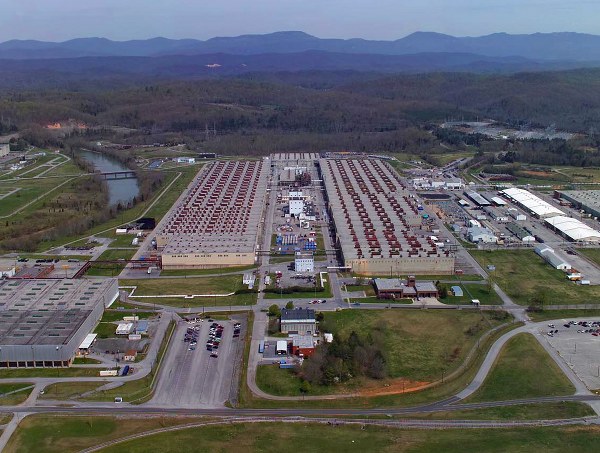
Now demolished, the former mile-long, U-shaped K-25 Building, pictured above, was once used to enrich uranium for atomic weapons and commercial nuclear power plants. Located in west Oak Ridge, the site could become part of a Manhattan Project National Historical Park. There is a separate effort to preserve the site’s history; that work could be incorporated into the new park. (Photo courtesy of U.S. Department of Energy)
Knox said the Manhattan Project story is one of scientific achievements, the men and women who labored in secrecy in places like Oak Ridge, and the “good and the bad of nuclear weapons.”
“It’s a very complex story that continues to this day,” Knox said. “Our goal is to tell that story in all its complexity.”
This week’s visit included officials from the National Park Service—the nation’s storyteller—and the U.S. Department of Energy, which owns many of the buildings being considered. They will visit Hanford in mid-April and Los Alamos in June.
The legislation that created the Manhattan Project National Historical Park was passed by Congress last year, and it establishes the park no later than one year after enactment. During that time, the U.S. Department of Energy and Department of Interior, which includes the NPS, need to enter an agreement on their roles and responsibilities. They are expected to sign that before December 19, 2015.
The new park is unique in that it has three sites in three states.
The B Reactor in Hanford is the only DOE site that is definitely included in the new national park, according to Colin Colverson, Manhattan Project Park lead in the U.S. Department of Energy’s Oak Ridge Office. But other sites are eligible for inclusion. In Oak Ridge, there are four DOE sites that are eligible: the former K-25 Building, the Graphite Reactor, and buildings 9731 and 9204-3 at Y-12. The Alexander Inn, a non-DOE site, is also eligible to be included, Colverson said.
There is a separate historic preservation effort at the site of the former K-25 Building, but that work could be incorporated into the new national park.
Other sites in Oak Ridge could be included as well, Colverson said. He said Oak Ridge is the only one of the three park sites that allows the secretary of the Department of Interior, which includes the National Park Service, to identify other sites that can be included.
Some sites that local residents have already proposed be included—Clark Center Park and the American Museum of Science and Energy—would require DOE concurrence because they are currently DOE facilities.
Knox said he was “blown away” by the size of the crowd at the Thursday open house. He said he was amazed by the passion of DOE workers here and how the Oak Ridge sites “have been preserved and how they bring history to life.”
There are still questions to resolve, including how to grant access to potential park facilities located inside the guarded perimeters at ORNL and Y-12, which are DOE and National Nuclear Security Administration sites. Knox said the work will require a partnership.
“We’re still early in the planning process,” Knox said. “It’s going to take some time to get this right. This is a very complex park.”
Colverson said officials are moving to full public access at the former K-25 site. It’s now known as Heritage Center and being converted into a large industrial park.
There are bus tours that go to the Graphite Reactor at ORNL, and federal officials could increase and improve that public access, Colverson said, adding that DOE has already doubled the number of days that the tours, which start at AMSE, are offered. But the two Y-12 buildings are not currently part of the bus tours.
Colverson said DOE would be 100 percent responsible for the maintenance and operations of any of its buildings that are included in the national park.
After the NPS and DOE reach an agreement later this year, the next step involves planning for such issues as how to expand public access and the public experience. There will be short-term planning over the next few years and then long-term planning to expand on what’s already occurring, Knox said.
In the meantime, NPS officials was to hear from the public, Knox said.
More information will be added as it becomes available.

The Manhattan Project National Historical Park could include the X-10 Graphite Reactor at Oak Ridge National Laboratory. The reactor served as a pilot facility for the plutonium production reactors at Hanford. Plutonium was used in the second atomic bomb used in wartime; code-named “Fat Man,” it was dropped over Nagasaki, Japan, on August 9, 1945. (Photo courtesy Atomic Heritage Foundation)
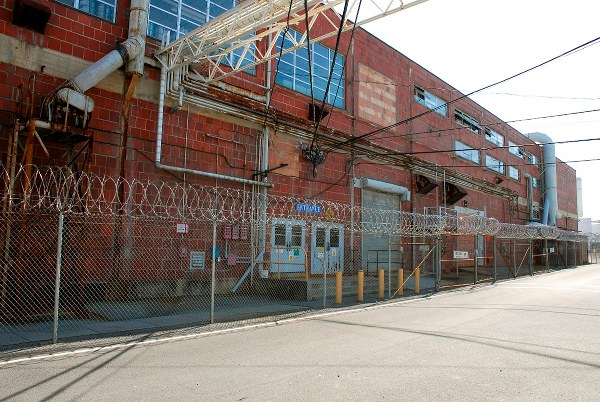
Building 9204-3 at the Y-12 National Security Complex could be among those included in a Manhattan Project National Historical Park. Also known as Beta 3, Building 9204-3 has beta calutrons that produced stable isotopes until 1998 and are still on standby. (Photo courtesy of Y-12 National Security Complex.)
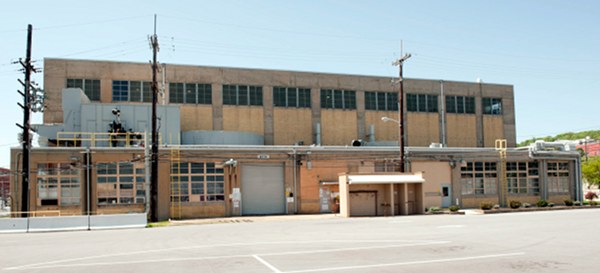
Building 9731 at Y-12 could also be included in the Manhattan Project Park. Building 9731 operated until 1974 and once served as a pilot plant to make improvements in the uranium enrichment process (electromagnetic separation) used at Y-12 during World War II. Uranium was used in the first atomic bomb used in war; code-named “Little Boy,” it was dropped over Hiroshima, Japan, on August 6, 1945. (Photo courtesy Y-12 National Security Complex)Â
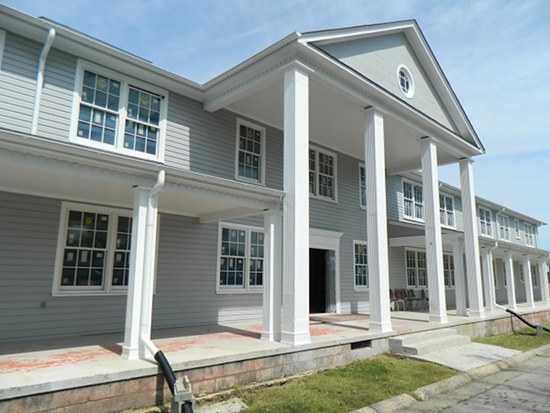
Construction work on the historic Alexander Inn, which is being converted from a hotel to an assisted living center, is pictured above in September 2014. Once known as the Guest House, the two-story hotel was built during the Manhattan Project, and guests who stayed there included General Leslie Groves, Secretary of War Henry Stimson, and physicists J. Robert Oppenheimer and Enrico Fermi.
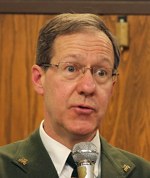

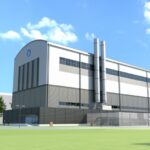
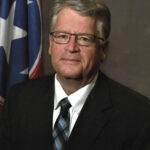


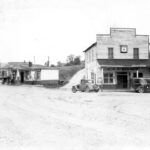
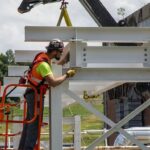
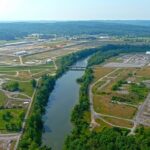
Philip W Nipper says
John, did you happen to catch the web address that Vic Knox put out at the meeting? It is a site specific for citizen input about the proposed park via e-mail to the NPS.
johnhuotari says
Philip, sorry I didn’t see this comment earlier. I did try the website link I thought he gave out at that meeting, but I couldn’t get that URL to work. I’m sending Vic Knox an email right now, and I’ll ask him about it.
Thank you.
johnhuotari says
Philip,
The Manhattan Project National Historical Park website is here: http://www.energy.gov/Manhattan
Comments on the park can be provided by sending an email to [email protected]
Thank you,
John
Philip W Nipper says
Thanks John!
johnhuotari says
You’re welcome.